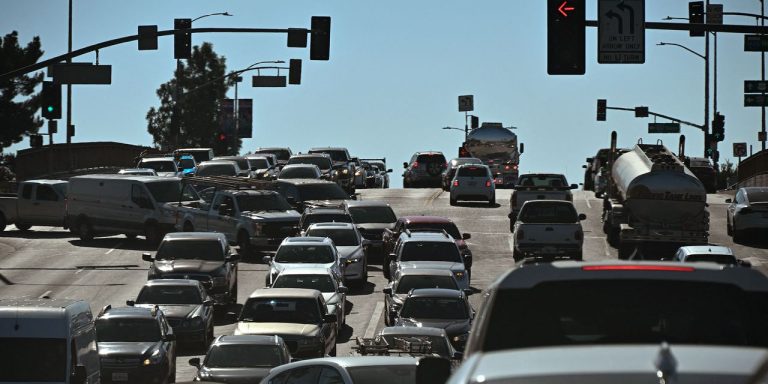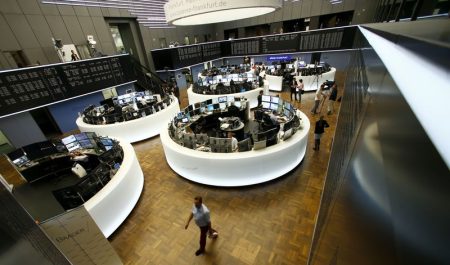The price for new and used vehicles declined in July compared with last year.
Robyn Beck/AFP/Getty Images
Rising prices for new and used cars have been a thorn in the sides of U.S. consumers for years. New price data show some relief is finally on the way.
That isn’t good news for shares of the automakers such as
Ford Motor
ticker: F) and
General Motors
(GM), though. What’s more, it isn’t all good news for car buyers, either. The repair and insurance costs will bite.
On Thursday, the Bureau of Labor Statistics released July consumer price data for the U.S. Prices for a basket of consumer goods advanced about 3.3% year over year. That’s up from 3.1% in June, snapping a 12-month streak of lower numbers.
Still, the number was low enough to assuage investors who want the Federal Reserve to stop raising interest rates. The
S&P 500
and
Dow Jones Industrial Average
have spent most of Thursday trading in the green.
Higher rates have increased the cost of personal transportation. In the second quarter, a record 17.1% of Americans financing a new car were paying $1,000 a month or more. That’s up from just 4.3% in the second quarter of prepandemic 2019.
Rates aren’t the only reason. New- and used-car prices are up about 29% from the end of 2019, before the pandemic hindered production and reduced the supply of vehicles.
The prices for new and used cars are going down, if slowly. In July, prices fell 0.2% year over year, the third such decline in the past seven months.
That isn’t great news for auto investors. Rising car prices have boosted automaker profits and the fear is lower prices will translate into lower profits.
The fear is showing up in stocks. Ford stock is down 4.8% in late trading Thursday at $12.12. GM stock is off 5.6% at $34.24.
Lower prices are good news for car buyers. The problem is the costs for insurance and repair are skyrocketing. Transportation services costs were up 9.3% year over year in July, the 28th consecutive monthly increase.
Insurance and repair costs can lag car prices, but they catch up eventually. Expensive cars require expensive parts to repair it, and the insurance is higher, too.
Transportation-services costs have been up about 21% since the end of 2019. There are probably some more increases to come to match the rise in vehicle costs.
That isn’t great news for consumers, but things are OK. The misery index—the inflation rate plus the unemployment rate—stood at 6.8 in July, up from 6.7 in June but down from 11.9 a year ago.
At least with people working and inflation declining, fixing a car won’t break the bank.
Write to Al Root at [email protected]
Read the full article here









